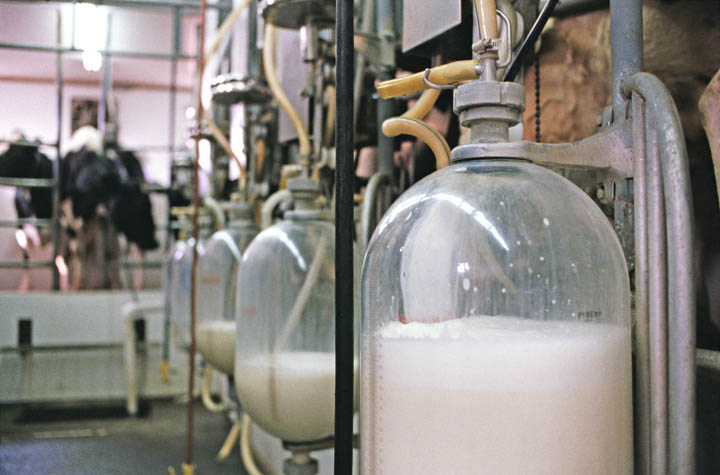January 31, 2012

We are what we eat, however, something as simple as splashing milk over morning cereal requires navigation through an array of choices—fat and lactose content, probiotics, vitamins A and D, homogenization and pasteurization. Claims that pasteurization decreases the nutritional and health value of milk are promoted by a small, but passionate segment of our society.
From 2000-2008, 50 disease outbreaks in the U.S. were attributed to the consumption of raw milk. In Michigan, outbreaks of food-borne illnesses attributable to raw milk consumption occurred in 2010 and 2011.
Despite this evidence, what motivates consumers to risk exposure to pathogens in raw milk? A recent survey in Michigan revealed that the reasons for preferring unpasteurized milk products are complex; including culinary taste and the desire to support local farmers. These are personal choices that are difficult to contradict. A majority of respondents also perceived that raw milk improves health. However, the nutritional value of pasteurized milk doesn’t differ from raw milk in nutrients such as protein and minerals, and because of supplementation during processing, has added vitamin D.
Although public sale of raw milk is not permitted in Michigan, consumers can become part owners of milking animals, through what are termed as “cow-share” programs. Shareholders can personally observe the milking, housing and care of the animals, assuring them of the source and quality of their milk. While their interest is admirable, most consumers are unable to appraise the quality of milk harvested on the farm.
Shedding of bacteria in milk, and clinical abnormalities that result from mastitis (a common infection of the udder) is inconsistent. Thus, there is no non-laboratory means to ensure that milk is free of pathogenic bacteria as it leaves an udder. Additionally, even in the best herds, contamination of raw milk occurs during and after milking. A United States Department of Agriculture study in 500 dairies found that 14 percent and 7 percent of on-farm milk samples yielded various strains of Salmonella and Listeria, respectively. Furthermore, herds that market milk for public sale in Michigan must submit to Grade A standards that include on-farm inspections and laboratory evaluation of quality. No such standards are imposed on producers of raw milk, thus purchase of raw milk is very much a buyer beware market.
In the end, it is hard to argue with personal tastes and emotions that motivate people to choose the foods they eat. In a society that permits cigarette smoking, consumption of alcohol and tacit approval of speeding in automobiles, it is difficult to prohibit people from assuming risks, if they are willing to accept the consequences. While raw milk consumption presents a form of culinary roulette for all consumers, the concept of informed consent is not applicable to children. Ironically, the very segment of our population that benefits most from the dietary rewards of milk and other dairy products, is most at risk for the harmful consequences of raw milk consumption.
For further information, visit Real Milk Facts or Michigan Dairy News Bureau.
You May Also Like




